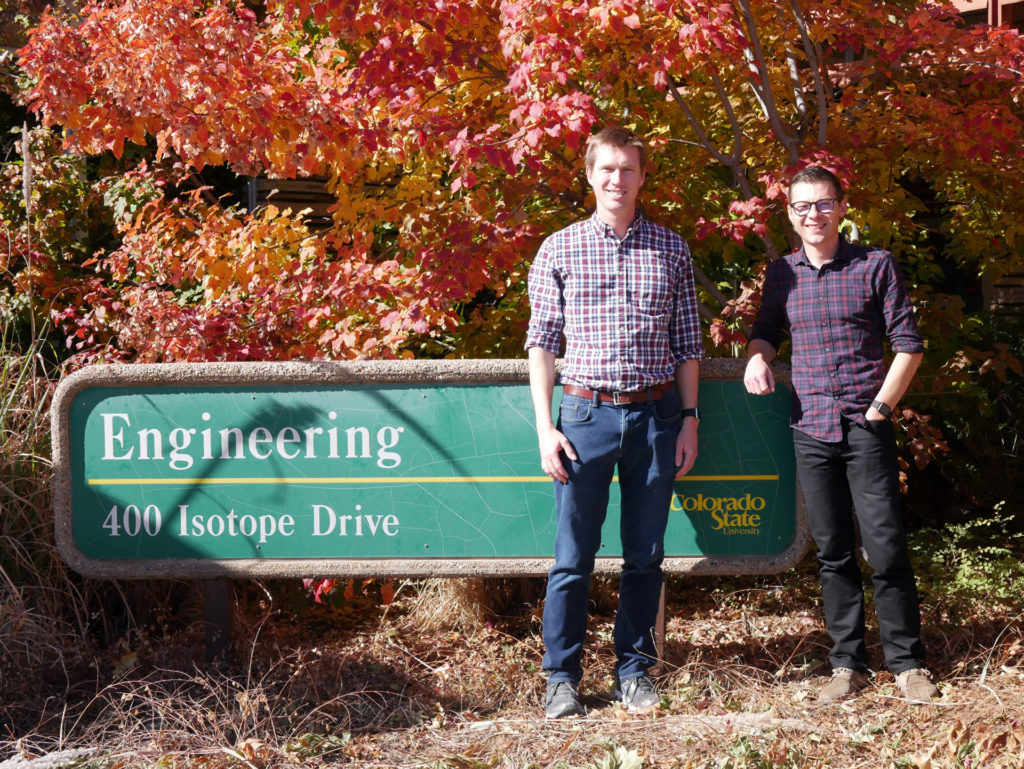Civil and Environmental Engineering professors to study how floodplain vegetation affects river flows

More than $1 billion is spent annually on river restoration and rehabilitation projects in the U.S., but restoration designs often don’t consider a central component of flood control: floodplain vegetation. CSU Department of Civil and Environmental Engineering Professors Ryan Morrison and Peter Nelson will apply a $309,553 National Science Foundation award to research how floodplain vegetation influences river flow and floodplain functions, in order to improve sustainable river restoration.
“By neglecting to consider floodplain vegetation in restoration designs, we increase risk of design failure and miss opportunities to include floodplain functions in design approaches,” Morrison and Nelson wrote in their research proposal.
Floodplains reduce flooding severity, provide habitat, improve water quality, and are a source of nutrients and sedimentation. Vegetation plays an important role in how floodplains work, but we don’t have a good understanding of how it affects the exchange of flow and momentum between in-channel and overbank flow during floods, and how these connections may influence stream channel stability.
To unravel these complex processes, Morrison and Nelson will conduct flume experiments at the CSU Hydraulics Laboratory at the Engineering Research Center, along with numerical modeling. Using characteristics of local river restoration projects, lab experiments will measure velocities, turbulence and hydrologic exchange flow, or the transfer of water between a river channel and floodplain surface. They also will test various floodplain vegetation configurations to determine, for example, how vegetation density and size alter floodwaters.
Field data collected from local restoration sites on the Cache la Poudre River will complement information gathered in the controlled experiments, and all of it will feed into numerical modeling.
“Fort Collins has been active in implementing stream restoration projects along the Poudre River and other streams in the city,” Nelson said. “We will use the understanding we will have gained from the physical experiments to improve our ability to use numerical models, and we will use these improved models to explore the implications of implemented and proposed vegetation densities on restoration projects in the area.”
As Morrison and Nelson noted in their proposal, the City of Fort Collins has invested nearly $10 million into restoring the Poudre River, with the goal of transforming it to provide a greater connection between natural and human systems. This aspiration makes it an ideal test subject for their research.
Not only do Morrison and Nelson look forward to learning from the city’s restoration efforts, they plan to engage Poudre River stakeholders at several outreach events: the Poudre River Forum, Poudre River Fest, and the city’s Science Behind the Scenery program. They will share their research and how it affects the community and local restoration projects.
“We are using outreach to highlight the importance of sustainable river restoration and care of the Poudre River,” said Morrison.